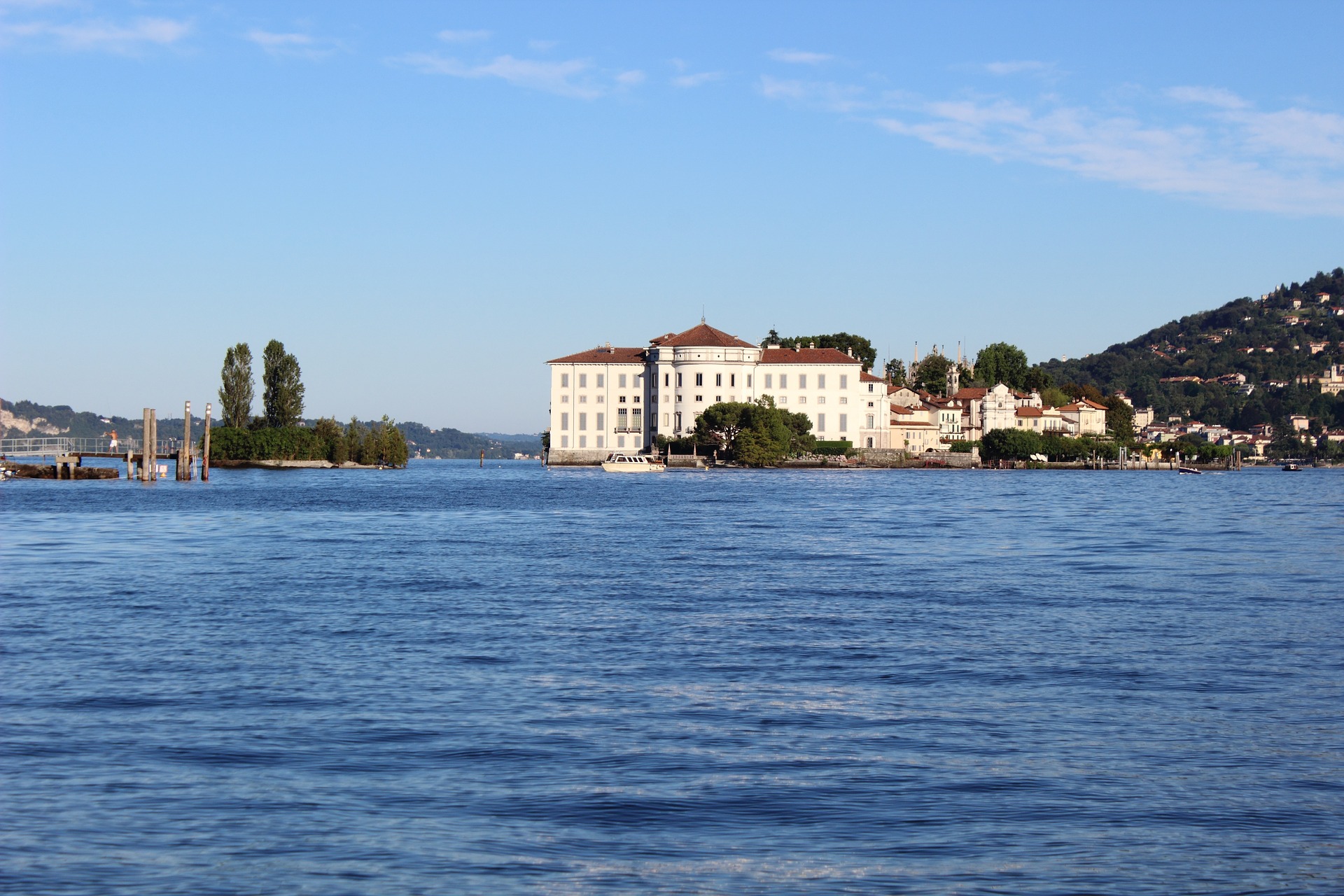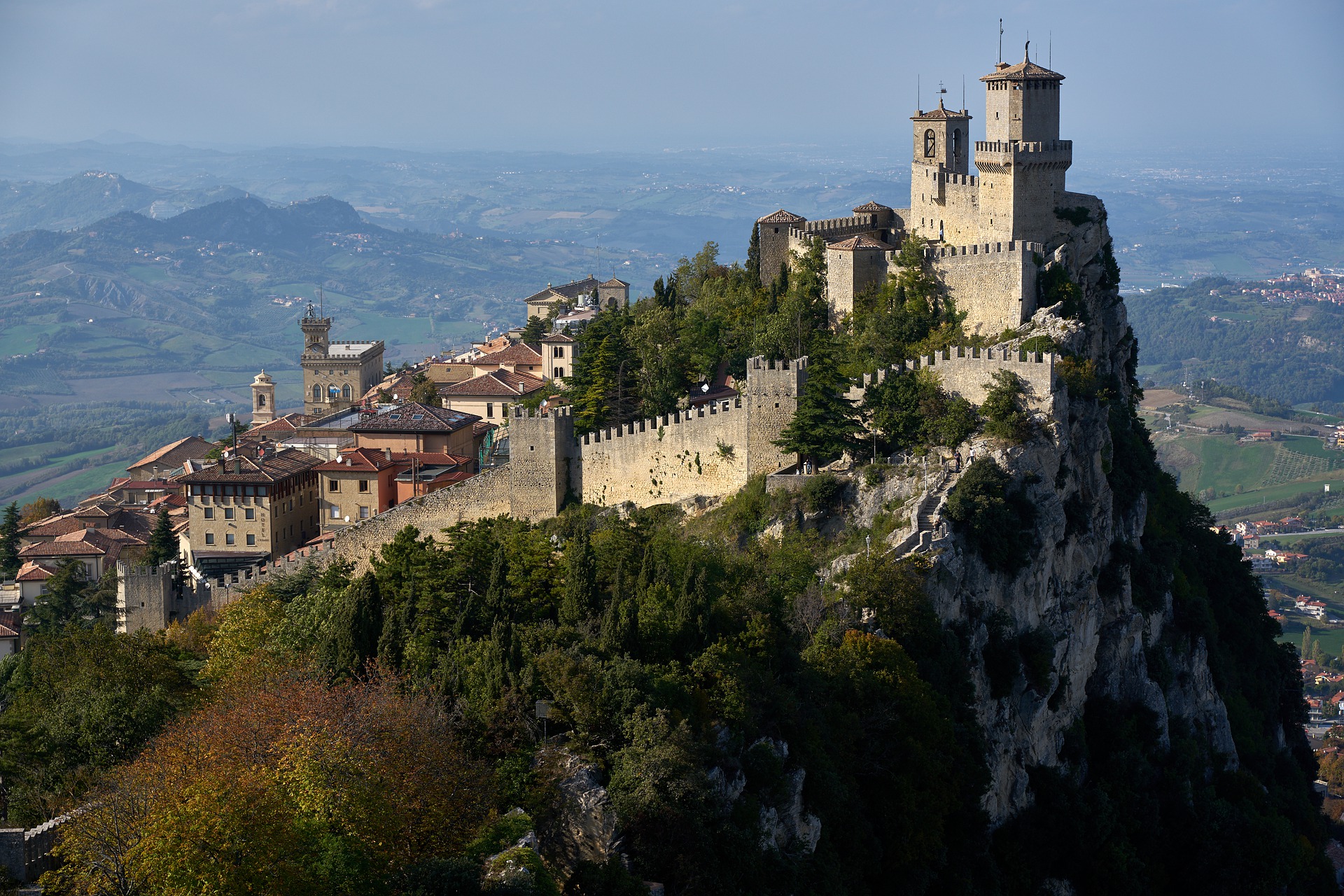When you visit Lago Maggiore, one of the three major lakes in northern Italy, you’re visiting the princedom of the Borromeo family. Yes, “princedom”. The Borromeo heirs hold the titles of “Prince” and “Princess”. How cool is that?!
A few weeks ago I took an hour-long train from Milan to Stresa, one of the main towns on Lago Maggiore and a true tourist town in every sense. Regal resorts line the shore, each one boasting an incredible view of the water and of the islands that are the lake’s main tourist attractions. If you (or your pocketbook) aren’t prepared to spend a few hundred dollars a night on accommodation, though (I know I wasn’t), there are an array of cute alberghi and inns closer to Stresa’s main piazza, in the middle of a small network of narrow streets that take the curious wanderer from cute restaurant to cute wine shop to cute bakery to cute knick-knack store. The piazza itself is a beehive of activity, lined on all sides by bars and cafés, picture menus propped up on easels at their entrances, and filled with colorful tables under the shade of umbrellas.
From the lakefront, where a wide stretch of green runs along the water, you can see the Borromeo islands in the distance: Isola Bella (where the Borromeo Palace and its garden dominate), Isola Superiore (otherwise known as Isola dei Pescatori, “Fisherman’s Island”, which has kept its quaint character even while transitioning from a working island to a lunch destination) and Isola Madre (”Mother Island”, a large garden island, from what I was told – unfortunately ferry service to Isola Madre was temporarily suspended while I was there).
I quickly realized that, before doing anything else, I needed to understand who the Borromeo family is and why and how they came to be “princes” of this part of Italy. Visiting their palace on Isola Bella was like visiting Windsor Palace, for goodness sake! I hadn’t expected to find anything like it in modern-day Italy.
The first Borromeo to come to prominence was Filippo Borromeo who, in 1367ad, with the support of the Holy Roman Emperor, led a revolt in Florence against the Guelphs. His five children took refuge in Milan during this time and wound up staying there, as in 1370ad Filippo was captured in Florence and beheaded.
One of Filippo’s sons, Giovanni, established a bank in Venice with branches in Milan, Rome, London and Bruges. Not having any descendants of his own, he adopted one of his nephews – a young man with the unfortunate name Vitaliano Vitaliani – as his heir. Vitaliano (now) Borromeo moved the main branch of the bank from Venice to Milan and opened two new locations in Barcelona and Burgos, Spain. He was granted official citizenship in Milan and, in 1418ad, was made treasurer to the Duke of Milan.
Through the 1430′s the Duke awarded Vitaliano with various territories outside of Milan including Ancona on Lago Maggiore, a property with which also came the title of Conte, “Count”. Over the years political affiliations gained the family even more land and another title of “count”, this one for Vitaliano’s son, Filippo.
On December 25, 1559 one of the Borromeo descendants was elected Pope Pius IV. The following year, the newly established Pope made one of his Borromeo nephews a general in the Vatican army and made another, named Carlo (“Charles”), who had already started an ecclesiastical career, the archbishop of Milan. He asked Charles to stay in Rome, however, to perform duties similar to that of a Secretary of State. Charles wasn’t happy there, though, and when his uncle the Pope died in 1565ad he returned to Milan where he led a holy life of compassion, renunciation and asceticism. He sold the family’s property and titles and used the money to benefit the church’s mission, walked among victims of the plague and staunchly carried out the reforms put forth by the Council of Trent. He died in 1584ad and was canonized St. Charles Borromeo in 1610ad. The ultimate claim to fame – a saint in the family! – for a historic Italian family.
Charles wasn’t the only holy member of the family to leave a legacy, though. Federico Borromeo was made a Cardinal in 1587ad at the tender age of 23. He had a truly exemplary ecclesiastical career in Milan where he established the city’s first library and museum that were open to the public – and still are to this day! – the Biblioteca and Pinacoteca Ambrosiana.
At some point during the 16th century the Borromeo family acquired the three islands in the middle of Lago Maggiore and, in 1650ad, Vitaliano VI Borromeo began construction of the palace and gardens on Isola Bella.
It wasn’t until the 1920′s, however, that King Victor Emmanuel III restored the princely title to the Borromeo family that St. Charles had sold off a few hundred years before. And so the Borromeos are princes (and princesses) again, and the flag in the courtyard of their palace informs guests when the family is in residence.
Even when they’re not there, however, their signature white peacocks welcome guests in the terraced gardens and curious travelers stroll through one floor of the family’s palace, admiring ornamental rooms with super high engraved and gilded ceilings, historic furnishings and endless pieces of art. They visit the room Napoleon and his wife slept in and where the King and Queen of Piemonte stayed in the early 19th century. They imagine the Conference of Stresa in the Music Room, where, in 1935, Mussolini met with officials from France and Britain to discuss a last ditch attempt to stave off WWII by allying against Hitler (that, obviously, went another way). They go on to admire a painting gallery with over 2000 paintings of various quality and importance jammed onto the walls and a series of tapestries featuring the mythical unicorn (the family’s emblem) before climbing down to the lower floor, where they walk through the 18th century “grottos” (fake caves were all the rage when the palace was built).
The Borromeo family has a significant and acknowledged legacy in Italian history, a legacy that you can see and experience for yourself with a visit to their “princedom” on beautiful Lago Maggiore.
Jessica is a travel enthusiast and entertainment executive living in Los Angeles. Her independent travels through Italy have inspired her travel blog, OneDayInItaly.com































